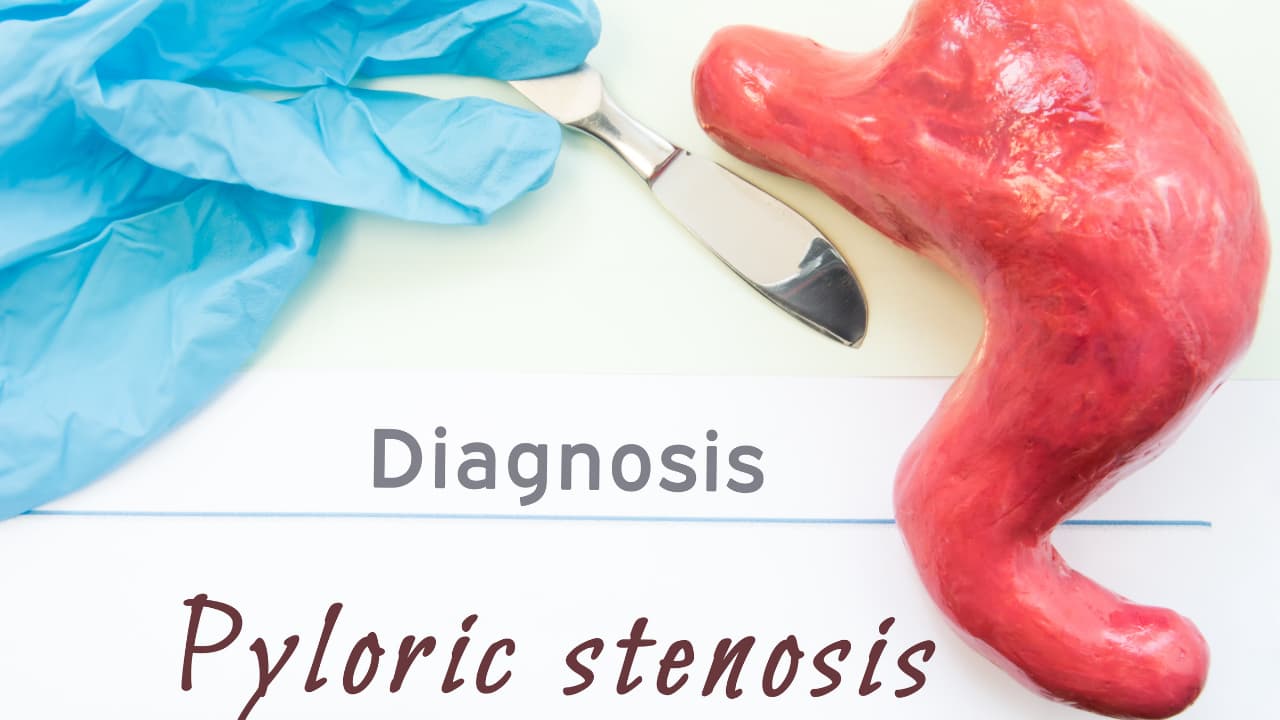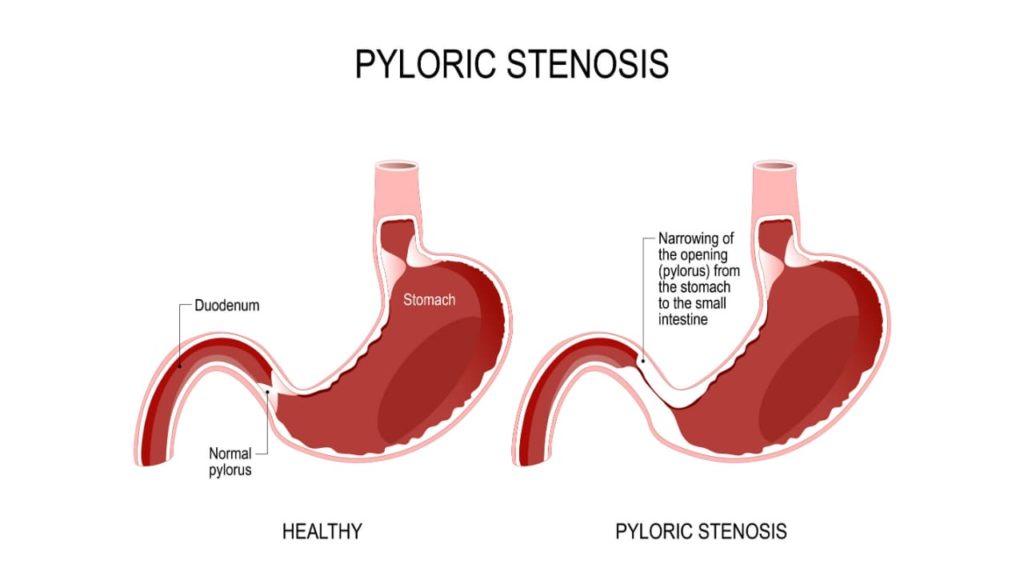What is Pyloric Stenosis (HPS)? What Are the Symptoms of Pyloric Stenosis?


Overview Pyloric Stenosis
The human stomach has two sphincters on each end, so that the food eaten , remains in the stomach for the duration of digestion, without any leakage. The sphincter near the heart is known as ‘cardiac sphincter,’ and the one near the intestine is known as the ‘pyloric sphincter.’
In some cases, the pyloric sphincter of the infants gets tightened. This is due to the thickening of the sphnicter muscles, causing an obstruction in event-free passage of food. This usually induces forceful vomiting in the infants, causing dehydration. It can, however, be repaired by surgery.
About Pyloric Stenosis
Hypertrophic pyloric stenosis (HPS) is an uncommon condition that is seen in infants. It is usually seen after 3-5 weeks of birth and is rare after 3 months of age. It is usually confirmed using ultrasound imaging.
Pyloric stenosis causes an abnormal thickening of the muscle that controls the exit of food from the stomach to the intestine. Usually, the food gets digested in the stomach and is passed to the small intestine for further absorption of water and nutrients.
In Infants with pyloric stenosis , the food remains in the stomach. Subsequently, the food exits the body through the mouth, i.e., the baby vomits the breast milk or formula milk that was fed. Repeated vomiting also causes dehydration and these infants tend to be hungry most of the time.
What Are the Common Symptoms of Pyloric Stenosis?
The following are some of the common signs and symptoms that are usually seen in infants with pyloric stenosis:
- Vomiting After Breast or Bottle-Feeding. Usually, the babies start vomiting about half an hour to one hour after food. Initially, the vomiting is not that severe or frequent.
It later progresses to severe and frequent vomiting, with a characteristic ‘projectile vomiting.’ The baby usually throws out the contents of the stomach with force. This happens when there is severe tightening of the pyloric sphincter, and there is no or minimal space left for the food to pass.
Sometimes, there can also be blood in the vomit.
- Pain in the Abdomen. The babies usually feel pain in the stomach region in the area of stenosis. This is due to the constricted and tensed muscles.
- Feeling Hungry All the Time. Babies with pyloric stenosis usually feel hungry after feeding and throughout the day. These babies usually demand food right after getting fed.
- Dehydration. Vomiting after each feed makes the baby dehydrated. It is one of the most important signs, as this has been noted as one of the identifying factors of the conditions by the parents.
- Contractions in the Stomach. A wave type of muscular contraction is usually felt in the upper abdomen of the baby. It is felt right after feeding and before vomiting. This occurs because the stomach is trying to force food out of the sphincter and due to the constriction, it has to apply more force. Also, if felt carefully, a sausage shaped solid structure can be felt in the abdomen of the baby. This is the enlarged and tightened sphincter.
- Changes in Bowel Habits. As this condition does not allow food to reach the intestine in a normal manner, these babies are usually constipated.
- Irritability is caused due to constipation and other metabolic disturbances.
- Weight loss is commonly seen in these babies.

When to See a Doctor?
You should see a doctor if your baby has been vomiting after feeding and has been constipated. It is also important to note if there has been decreased urination and a noticeable weight loss. You should also check with your pediatrician if your baby has been irritable and less active than before.It is alarming if your baby suffers from projectile vomiting.
Call 1860-500-1066 to book an appointment
What Causes Pyloric Stenosis?
The exact cause of the condition is not known, however, genetic and environmental factors play an important role in causing the disease. It is usually not present at birth and develops afterwards.
Treatment of Pyloric Stenosis
The only treatment of pyloric stenosis is surgery. The procedure is known as pyloromyotomy. It is scheduled on the same day the diagnosis is made, as this is an emergency condition.
If the baby has been vomiting and is dehydrated, an electrolyte IV or oral supplement is given, depending on the frequency of vomiting.
In the procedure of pyloromyotomy, the surgeon cuts only the outer portion of the pylorus muscle, while retaining the inner layer. Once cut, the inner layer pops outside and creates space for the passage of food through the sphincter.
Usually, pyloromyotomy is done with the laparoscopic method rather than the traditional method. This allows quicker healing and recovery.
After the successful completion of the surgery, the baby is put in intravenous fluid replacements for a few hours. Regular feeding can be done if the post-operative observation remains uneventful after a duration of 12-24 hours.
It is important to note that some vomiting might continue even after the surgery, and it is completely normal. You might notice that the baby needs feeding more than usual.
Rarely, complications might occur after the surgery, like bleeding and infection. It is very uncommon in laparoscopic surgical procedure, and usually, the prognosis is excellent.
Call 1860-500-1066 to book an appointment
Frequently Asked Questions
Q. Is regurgitation a Sign of Pyloric Stenosis?
No, many babies usually regurgitate a little after food. This usually occurs due to air intake or overfeeding and is not a sign of pyloric stenosis.
Q. Is Pyloric Stenosis Common?
No. Pyloric stenosis is not a common condition. It occurs only in three babies out of every 1000 born. It usually needs surgical intervention to treat it.
Q. Do Children Above a Year of Age Get Pyloric Stenosis?
Yes. Older children do get pyloric obstruction, however, it is rare and is usually caused by peptic ulcer or eosinophilic gastroenteritis, an inflammatory condition of the stomach.
Call 1860-500-1066 to book an appointment
© Copyright 2024. Apollo Hospitals Group. All Rights Reserved.
 +91 8069991061
Book Health Check-up
+91 8069991061
Book Health Check-up







